7 reasons a red creeping thyme lawn is 1000x better than any other upgrade for your yard this summer
Fire-resistance is the most compelling for us
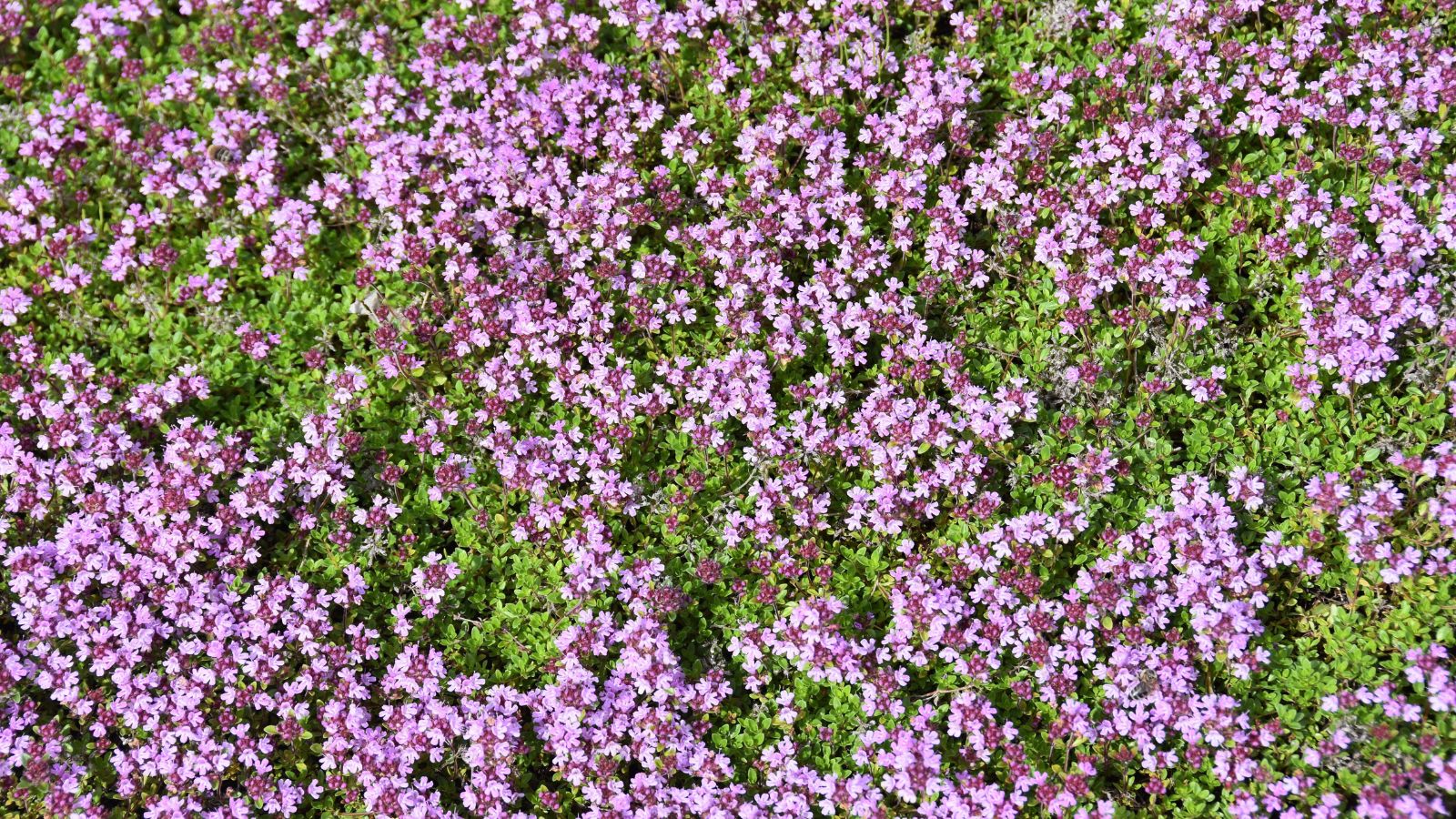

A red creeping thyme lawn comes with a ton of advantages. If you're considering reseeding a patch of grass, or replacing hard landscaping, this beautiful plant might be the perfect choice.
Growing a red creeping thyme lawn is pretty low-maintenance; this no-grass backyard idea produces a dense, mat-like growth that bursts into a vibrant display of tiny purple-red flowers in summer, adding life and color to your landscape.
And while it's not without its drawbacks – it's more expensive than sowing traditional grass and takes longer to establish – we think its benefits outweigh its disadvantages. I asked experts why they love it, though if you're already convinced, you can buy red creeping thyme plants from Nature Hills, and red creeping thyme seeds at Amazon right now.
1. It attracts beneficial pollinators
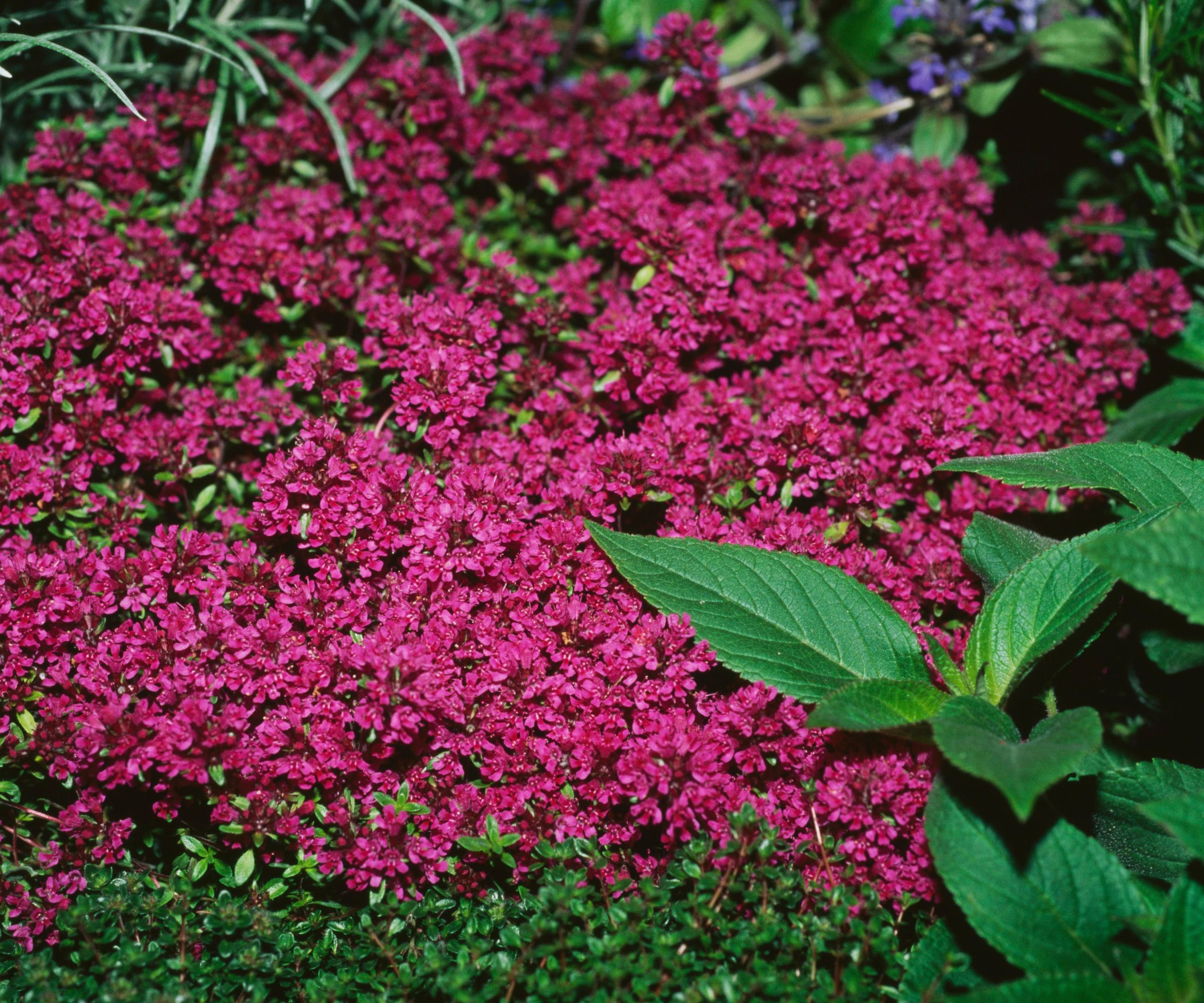
One of the biggest advantages of red creeping thyme is that it's one of the best plants for pollinators, making any garden more wildlife-friendly and supporting local ecosystems. A sustainable garden landscaping choice, a red creeping thyme lawn encourages pollination that can help maintain healthy plant life in your area.
It’s a plant that attracts bees, butterflies, and other beneficial pollinators that can enhance biodiversity throughout the rest of your garden. When red creeping thyme is in bloom – which is usually between May and August – its vibrant red and purple flowers offer an enticing nectar source.
'A red creeping thyme lawn is both beautiful and beneficial. It is smothered in pretty flowers during the summer, which attracts lots of bees and other beneficial insects to the garden. These insects can pollinate other plants so you get lots of flowers, or eat a host of garden pests,' says expert garden writer at Homes & Gardens Drew Swainston.
2. It naturally repels mosquitos and pests

While red creeping thyme attracts pollinators, it also works as a natural repellent for unwanted pests, offering the best of both worlds.
Design expertise in your inbox – from inspiring decorating ideas and beautiful celebrity homes to practical gardening advice and shopping round-ups.
This pest-repellent plant contains compounds such as thymol, which makes it one of the best plants to deter mosquitos, ants, and other annoying insects.
'The thyme leaves produce a strong lemony aroma when crushed. This scent is known to be a natural mosquito repellent, as well as deterring other biting insects,' continues Drew Swainston. 'As well as repelling insects, a red creeping lawn is resistant to damage from deer and rabbits.'
Whether you are planting red creeping thyme tactically, for example aiming to keep mosquitoes away from your pool, or wanting to enjoy your outdoor space without the nuisance of biting pests, this hardy ground cover flowering plant is a naturally effective solution that reduces the need for chemical pest control methods.
3. It's low-maintenance
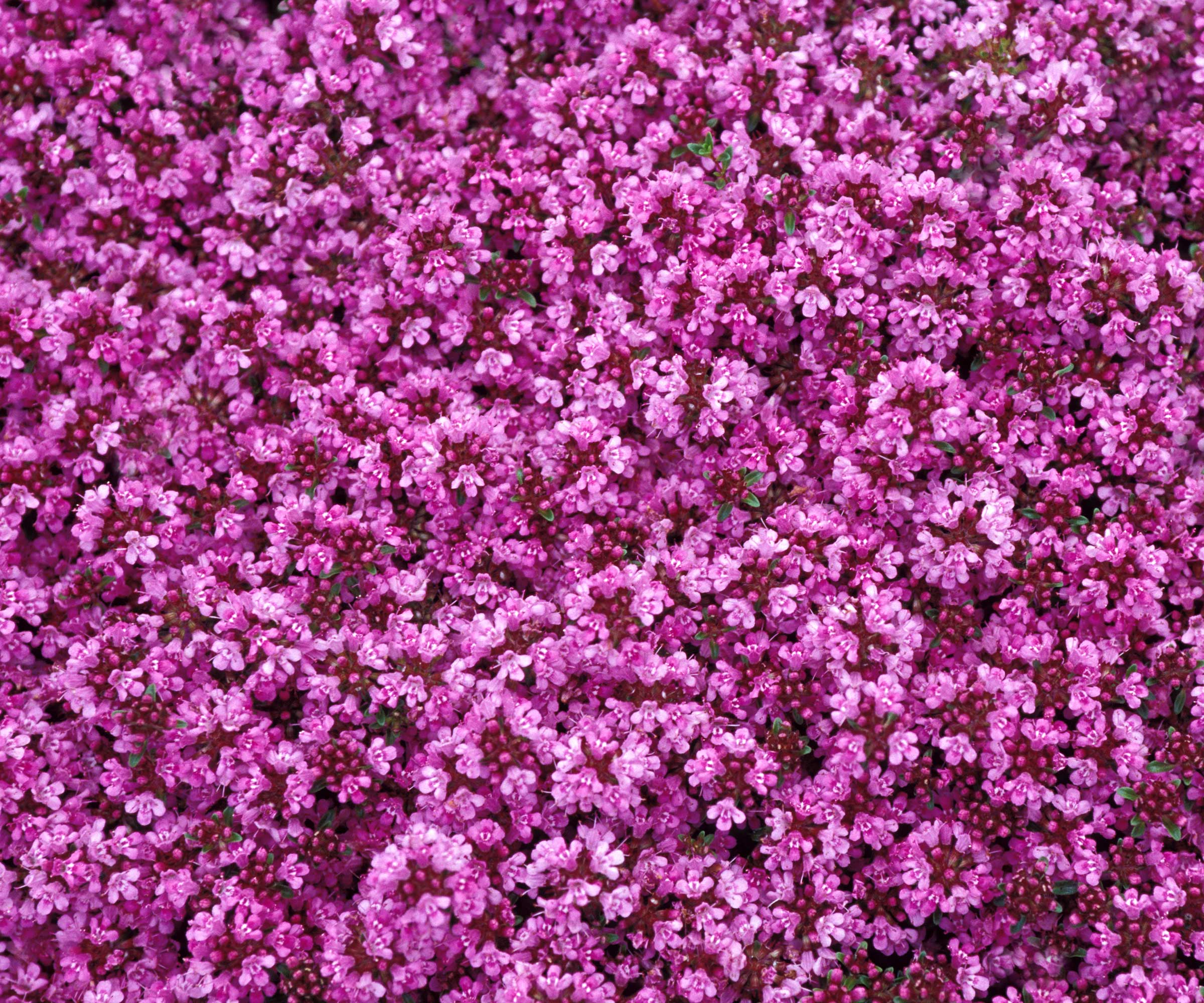
'Red creeping thyme can be an excellent alternative to traditional turfgrass,' says Steve Corcoran, CEO of Lawn Love. 'It doesn’t require regular mowing or fertilizing, plus it can actually choke out weeds.'
As one of the best ground cover plant to suppress weeds, it reduces the need for herbicides and manual weeding.
Another major benefit of red creeping thyme is its effortless ability to create a beautiful yard without the time-consuming upkeep.
Unlike traditional grass lawns that require frequent mowing, edging, and fertilizing, this walkable ground cover plant grows low to the ground and spreads naturally, eliminating the need for regular mowing. This makes it a low-maintenance option that practically takes care of itself.

Steve Corcoran is the CEO of Lawn Love, a company that is bringing high-tech solutions to the lawn care industry. Lawn Love has helped thousands of commercial and residential customers connect with the absolute best local lawn care professionals.
4. It has natural fire-resistance
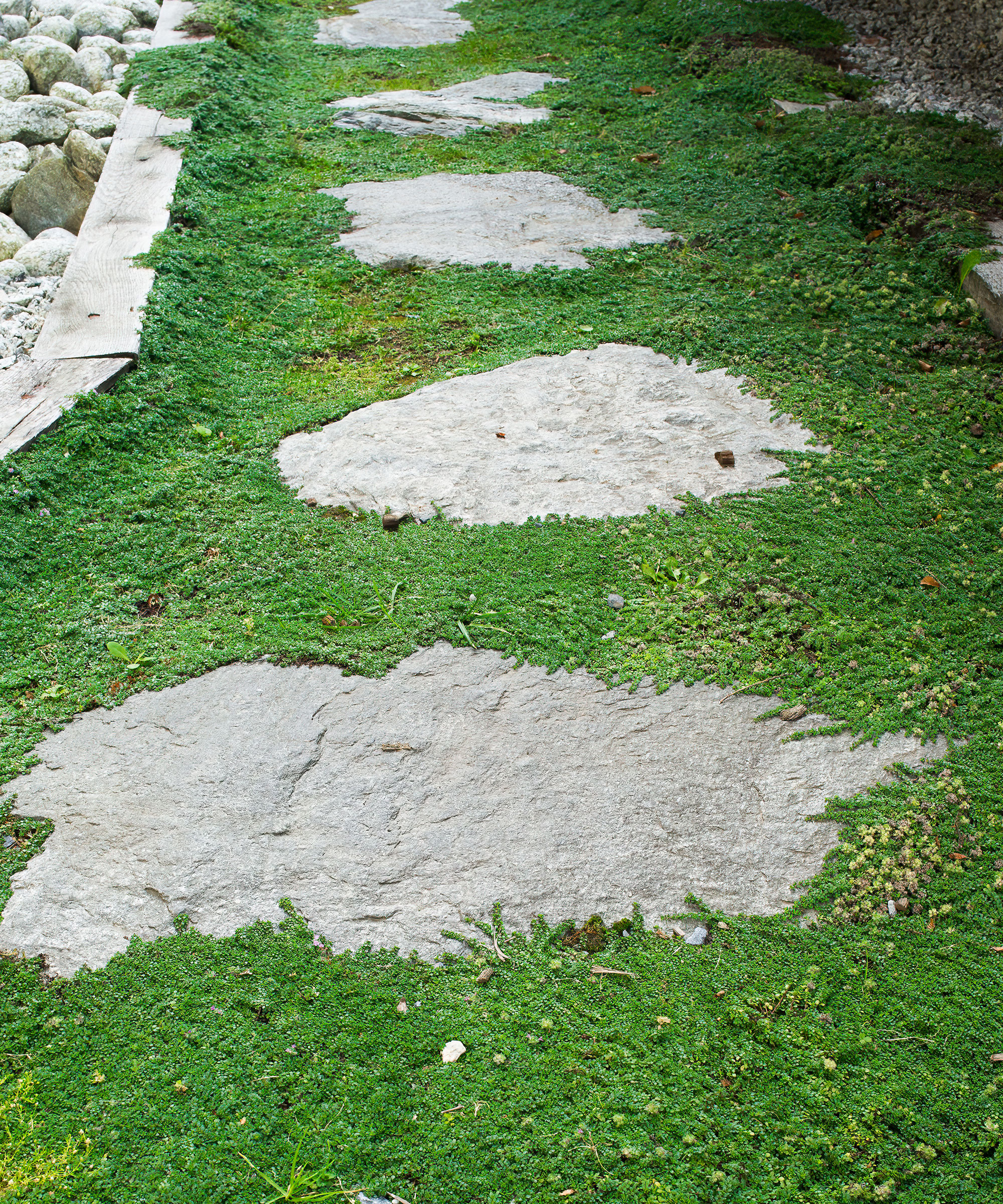
Red creeping thyme is a fire-resistant plant (note: NOT fire-proof), which makes it a wise choice if you are interested in fire-wise landscaping.
This plant's high moisture and low resin/oil content, dense, low, mat-forming growth, and ability to suppress more flammable weeds, all mean it is less likely to catch and spread fire, compared to other woodier, resinous plants.
Better still, red creeping thyme, especially if well-watered, doesn't produce dry or dead foliage, making it less flammable still.
As always, before planting anything in a wild-fire-prone zone, check local fire codes and regulations, keep dry debris from blowing into your lawn, and surround red creeping thyme with other non-flammable materials, such as gravel and stone.
5. It's drought-tolerant and water-efficient
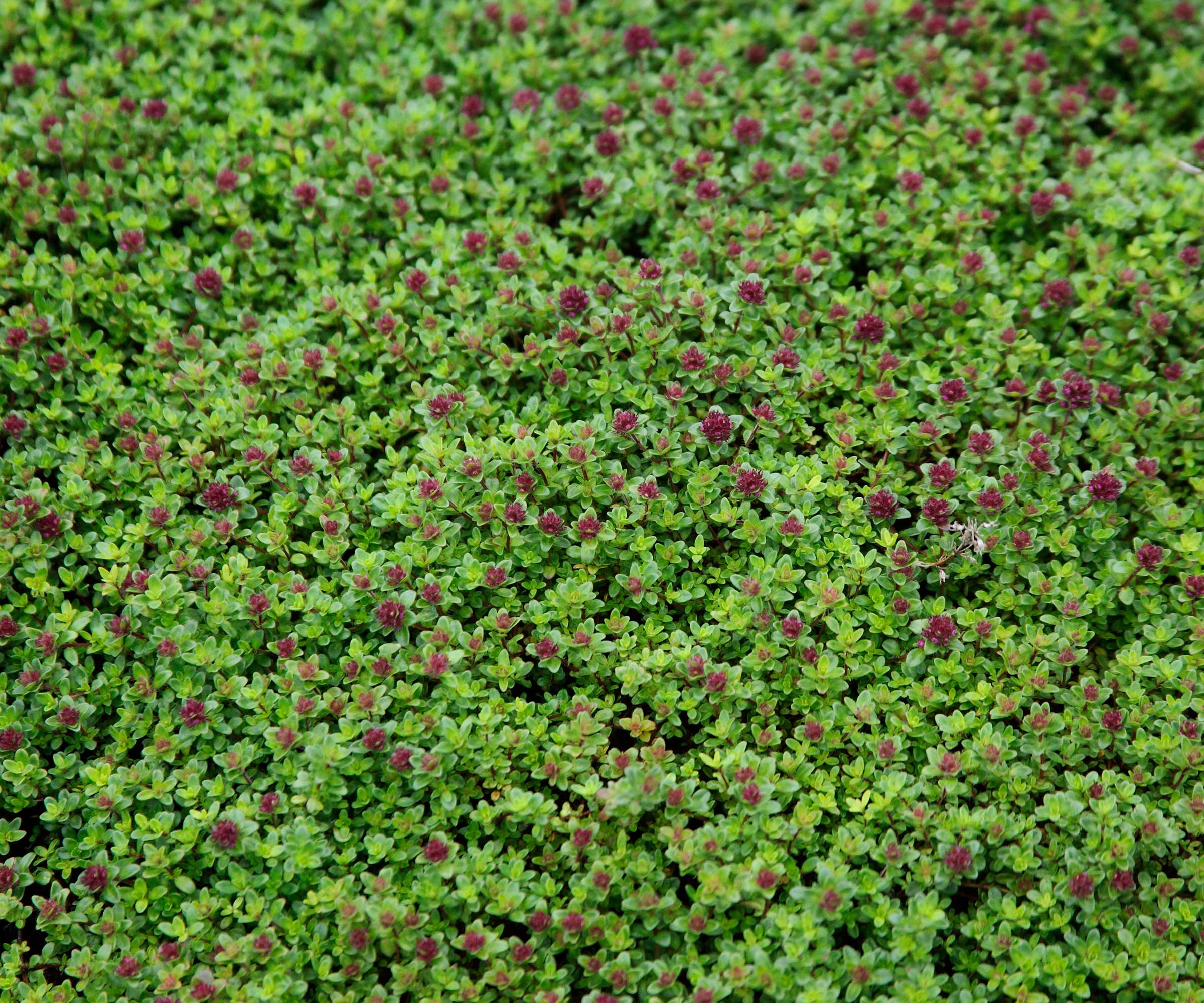
An important consideration, particularly in drought-prone areas and for eco-friendly landscaping, is water conservation. With growing concerns over water usage, many homeowners are turning to drought-tolerant planting ideas, and red creeping thyme stands out as an excellent choice.
'It is drought tolerant and loves the sun, so it needs far less water than regular grass does, helping you be more sustainable and save some money,' explains Steve Corcoran.
Its deep root system allows it to retain moisture efficiently, making it an ideal choice for regions prone to drought or water restrictions.
6. It's beautiful year-round

Beyond its practical benefits, red creeping thyme is also incredibly beautiful. In the warmer months, it produces stunning red and purple blooms, with peak bloom occurring from June to August.
Even when it is not in bloom, its dense, lush green foliage provides a soft and textured appearance, offering a gorgeous and unique lawn throughout the year.
7. It provides a pleasant sensory experience
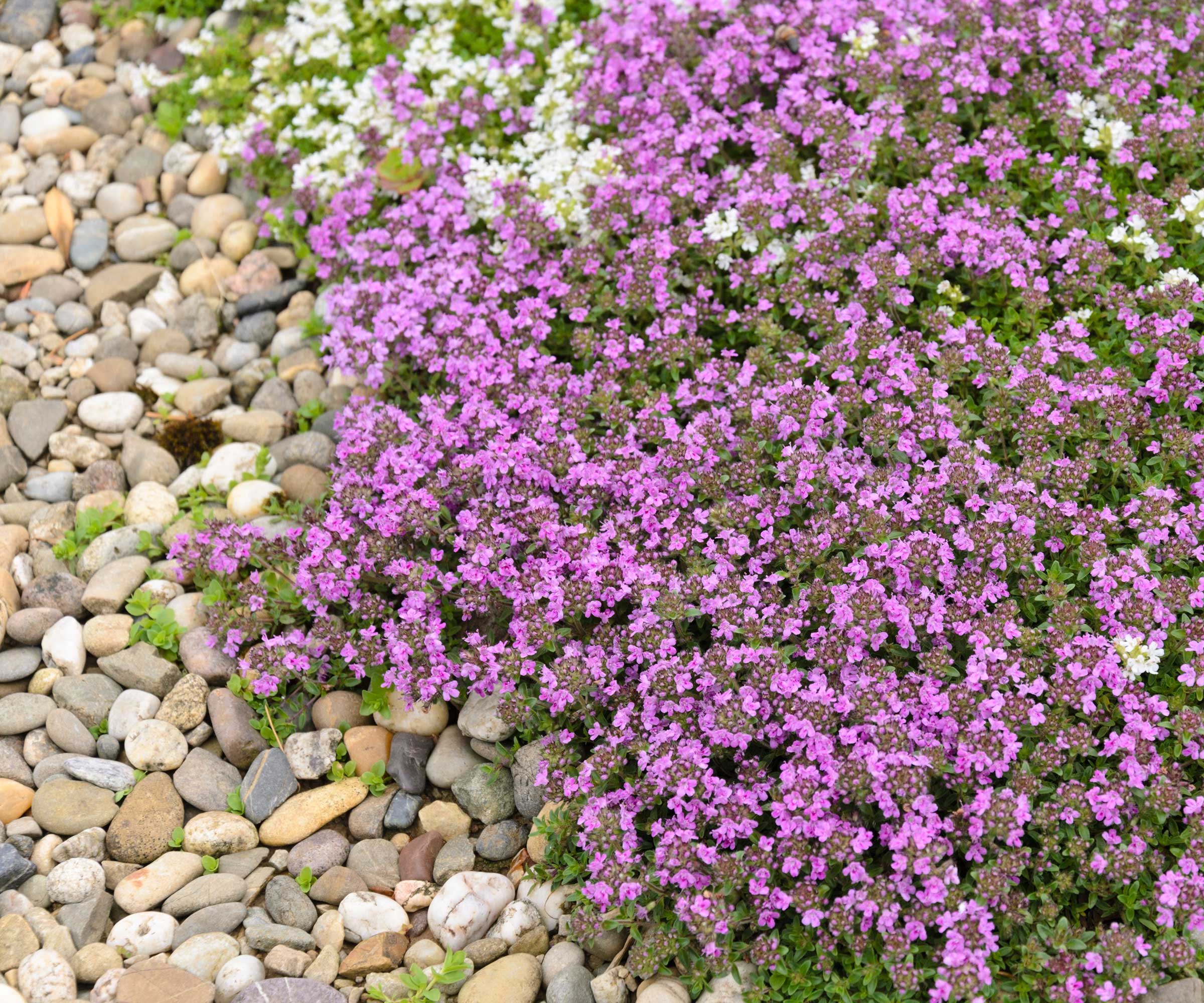
Your backyard can be a haven, especially in warmer months when you are likely to spend a lot of time outdoors. For those wanting to create a truly relaxing and immersive outdoor space, red creeping thyme enhances the experience with its subtle, earthy fragrance, adding a delightful sensory layer to your garden.
Walking on a thyme lawn releases a subtle, earthy fragrance, adding another sensory delight to your outdoor space. Also, unlike grass, which can become dry and scratchy, thyme remains soft and comfortable underfoot, making it a great option for barefoot-friendly landscaping.
With its ability to attract pollinators, deter pests, thrive in drought conditions, and provide year-round beauty, red creeping thyme is a practical and sustainable upgrade for any yard. Plus, the reduced need for mowing, watering, and chemicals means more time to enjoy your outdoor space with less effort.
Why not make the switch and transform your lawn into a thriving, fragrant, and visually stunning landscape? You can buy red creeping thyme plants from Nature Hills, and red creeping thyme seeds at Amazon.

Lola Houlton is a news writer for Homes & Gardens. She has been writing content for Future PLC for the past six years, in particular Homes & Gardens, Real Homes and GardeningEtc. She writes on a broad range of subjects, including practical household advice, recipe articles, and product reviews, working closely with experts in their fields to cover everything from heating to home organization through to house plants. Lola is a graduate, who completed her degree in Psychology at the University of Sussex. She has also spent some time working at the BBC.